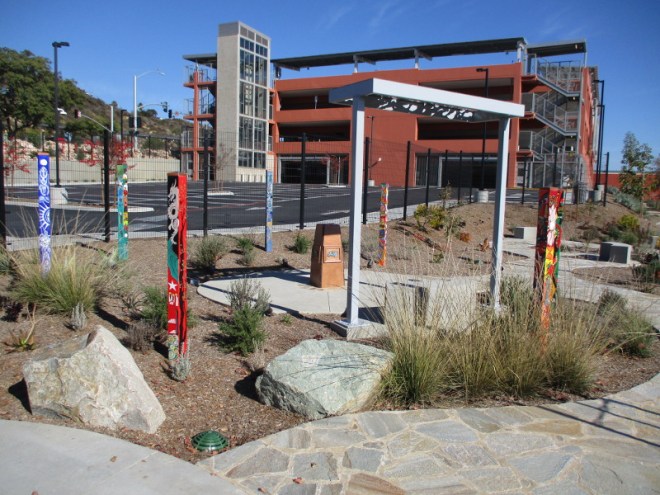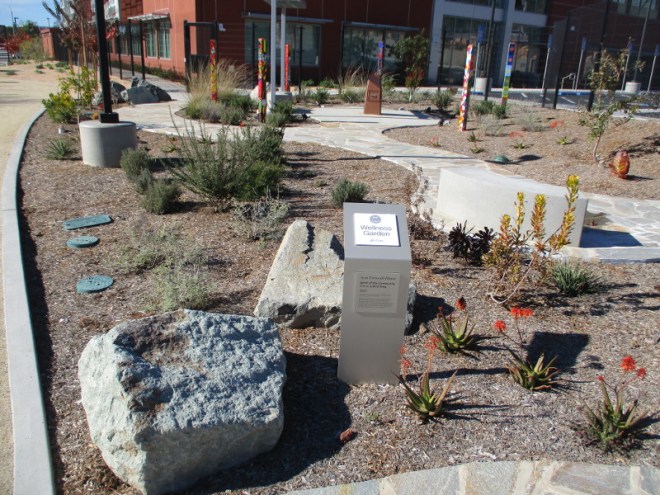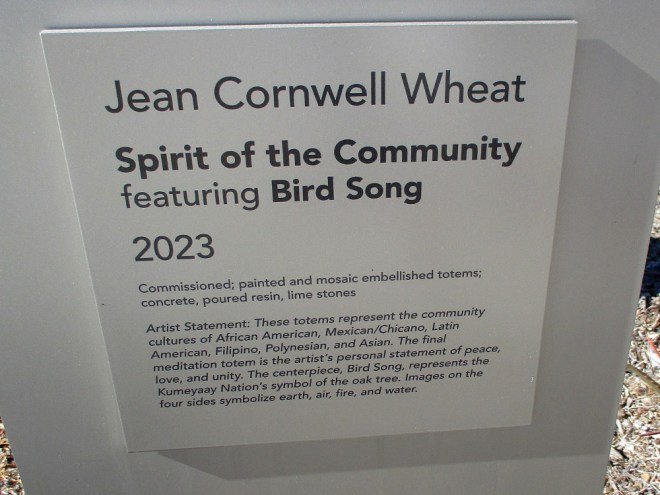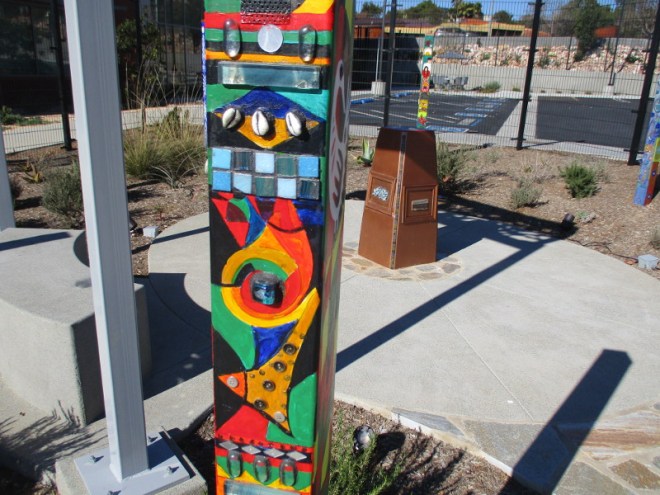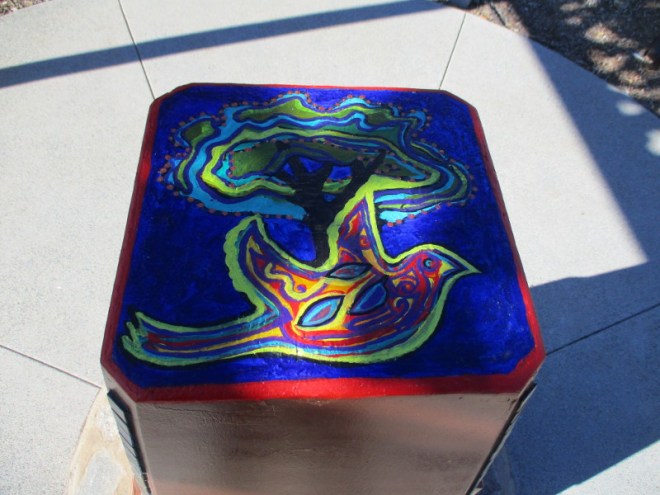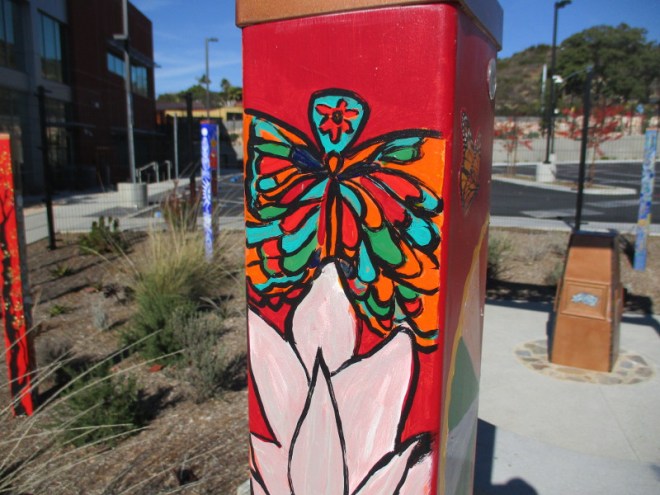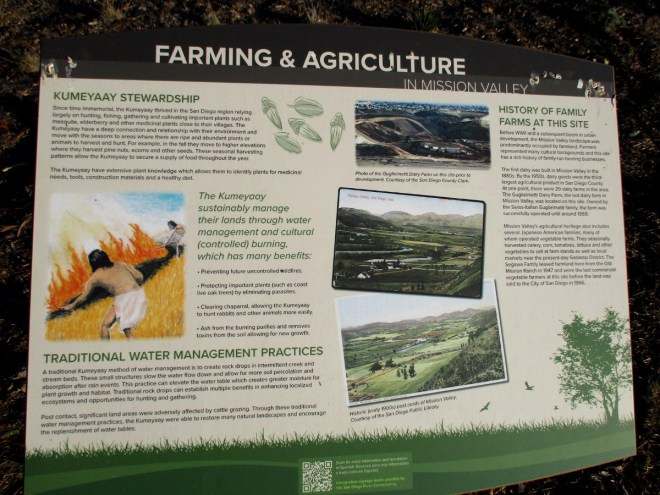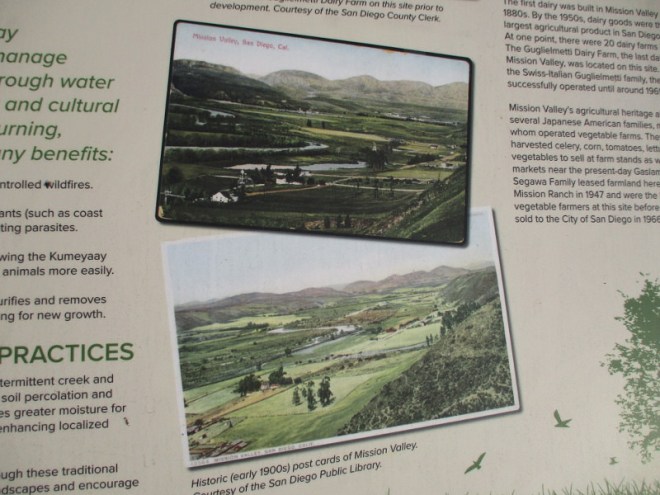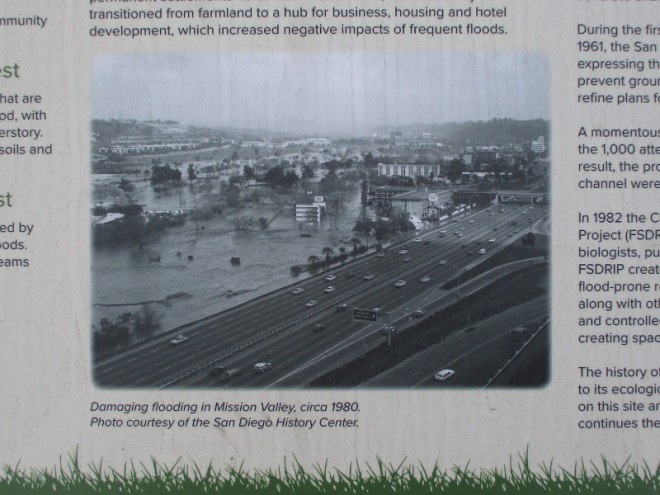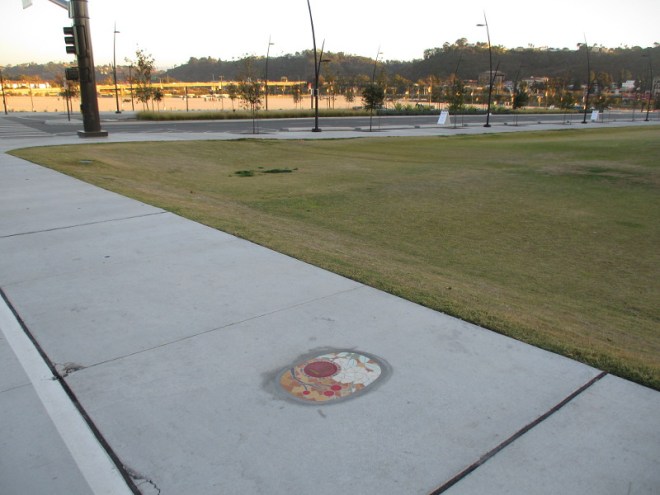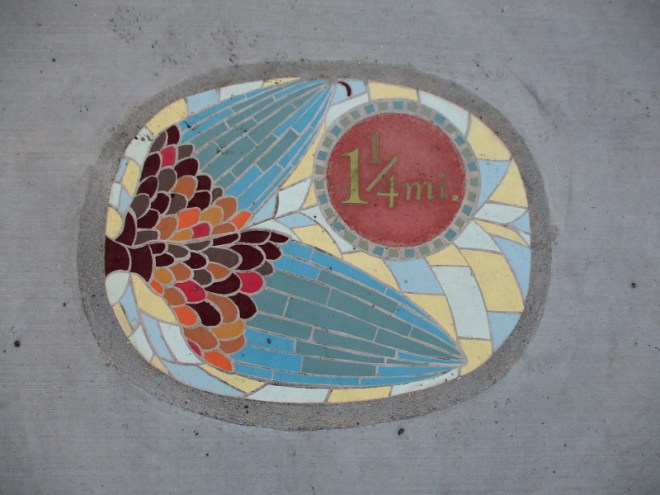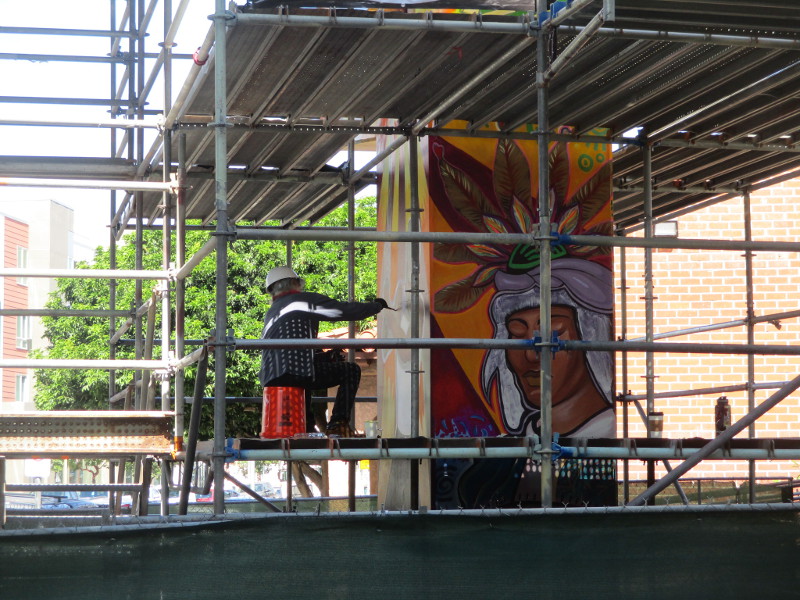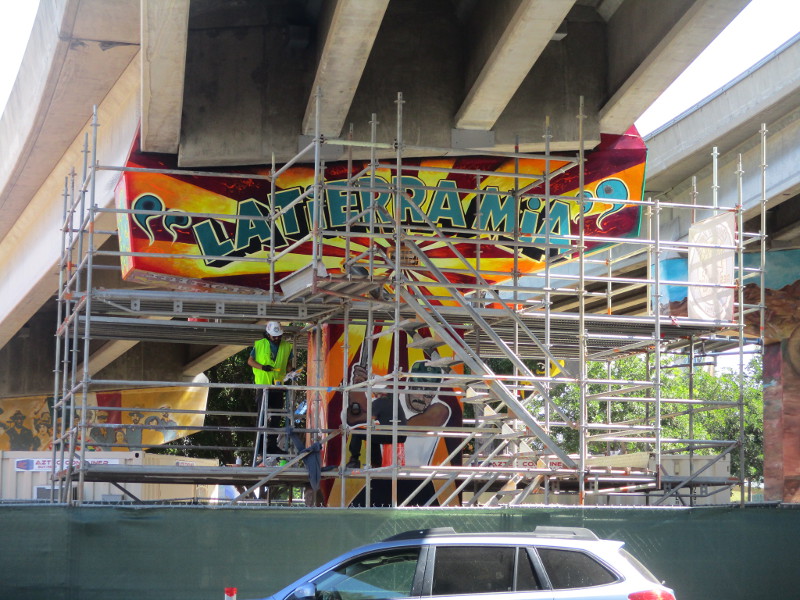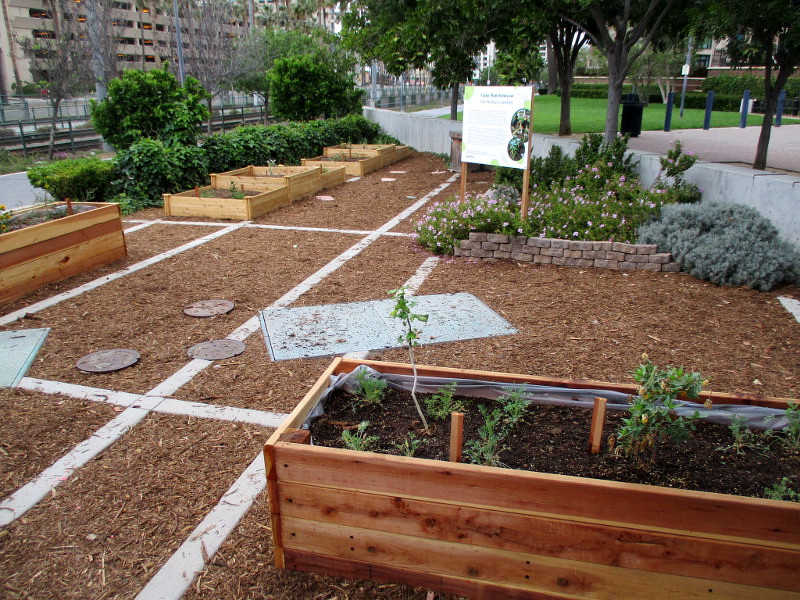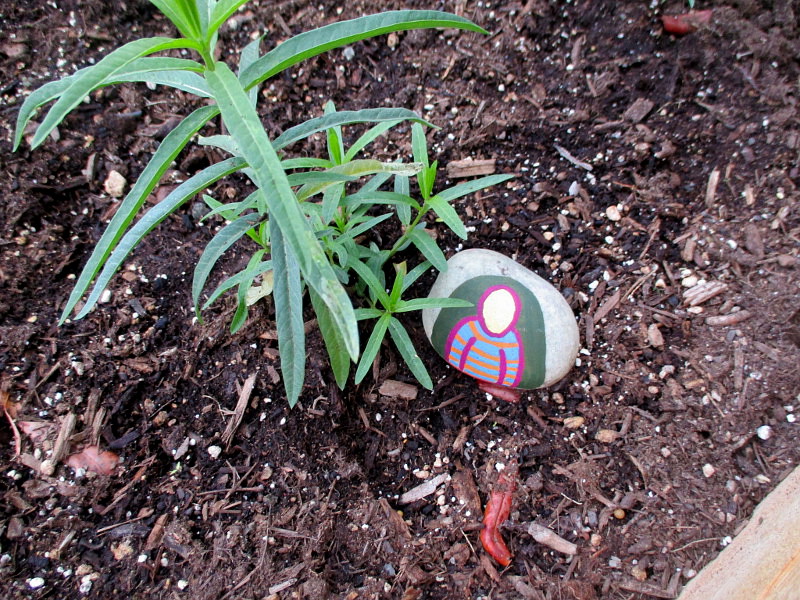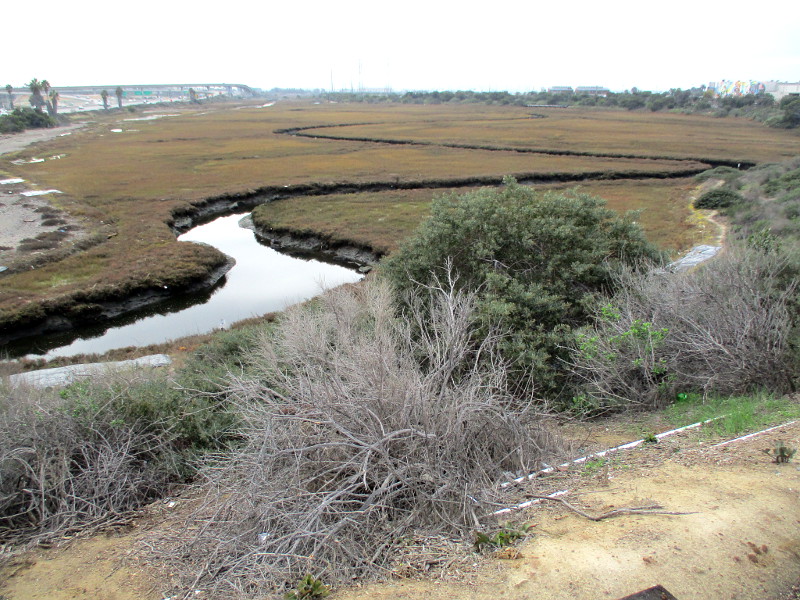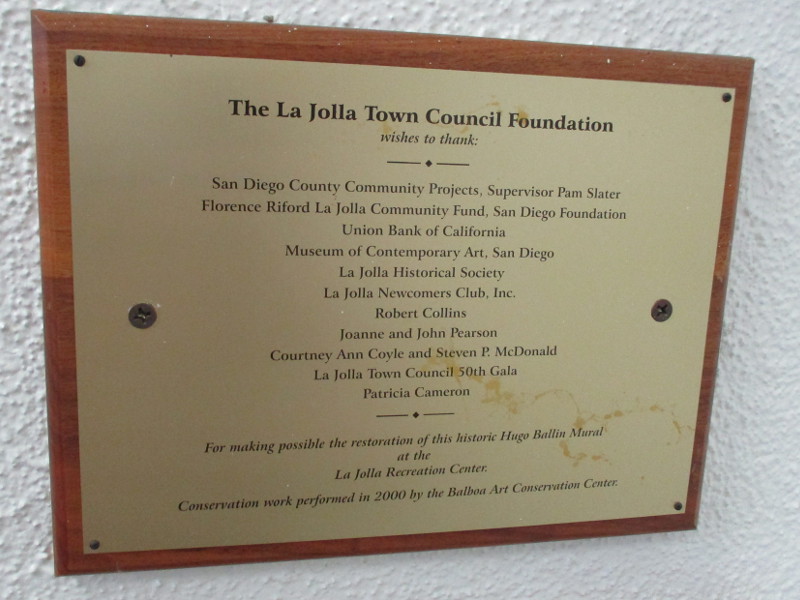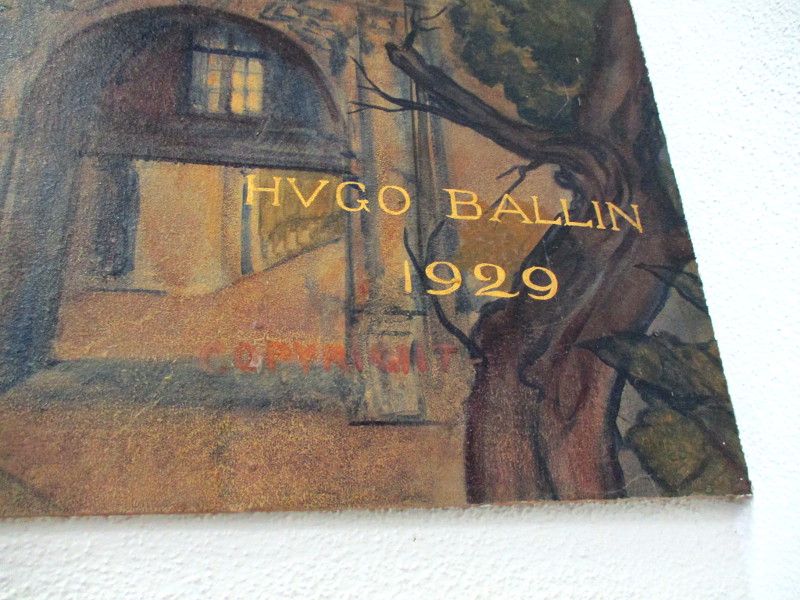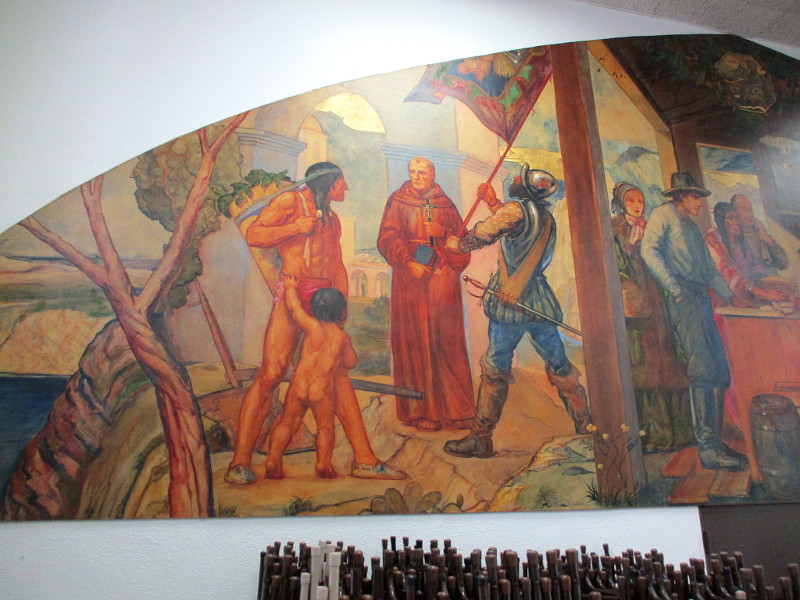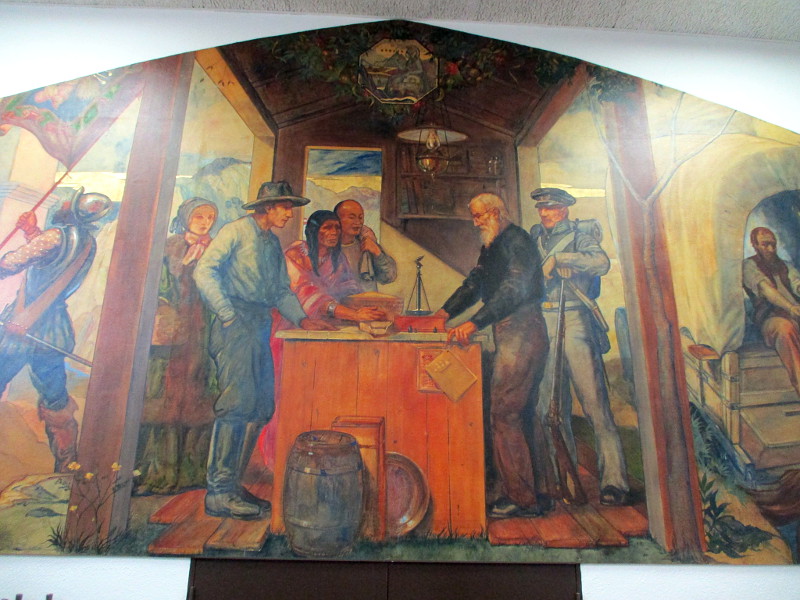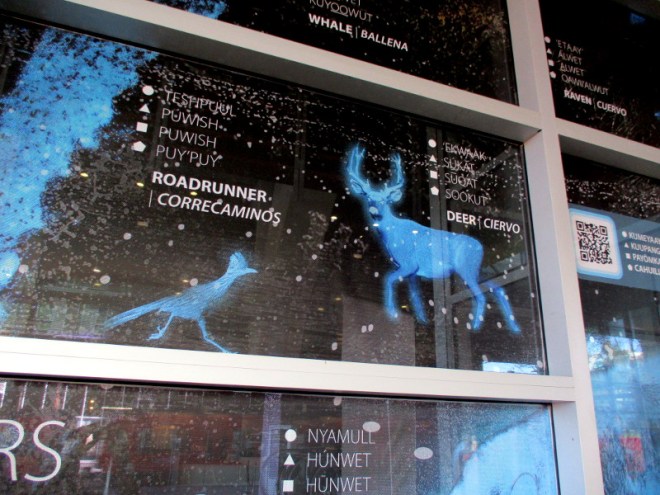
Art was recently installed on windows near the main entrance of San Diego’s Central Library. Before There Were Borders depicts native wildlife and the languages of indigenous peoples who lived in our region north and south of the present-day U.S./Mexican border, long before the arrival of Europeans.
Animals such as roadrunners, whales, deer, mountain lions, pelicans, rabbits, butterflies, coyotes and bears are matched with their names in four languages: Kumeyaay/Kumiai, Kuupangaxwichem/Cupeño, Payòmkawichum/Luiseño, and Cahuilla.
But there’s much more to the installation. As this explains, a “digital art piece will be accessible within the arcade of the Central Library. Rob Quigley, designer of the Central Library, envisions it to be one of ‘stage’ and ‘performance.’ As participants move though the arcade, images will appear to entice further exploration using a simple scan of a QR code with a smartphone. The installation will include video holograms, viewing cultural objects through augmented reality, and immersive reality language experiences.”
Before There Were Borders is part of a 1.7 mile artistic walking experience along the Bay To Park Paseo, a project inspired by the selection of San Diego/Tijuana as World Design Capital 2024.
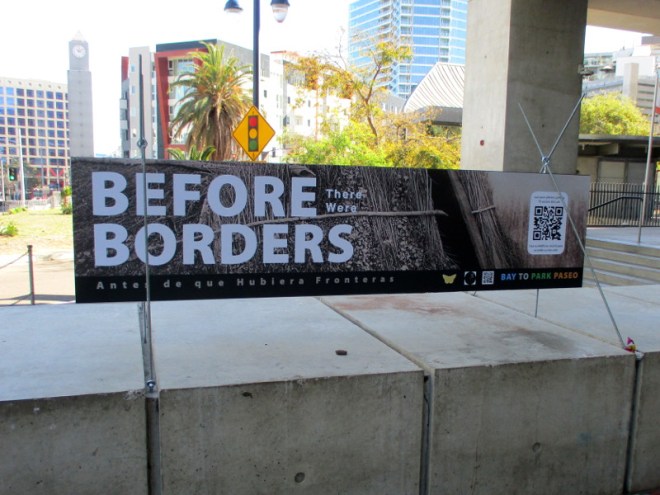



…
Thanks for visiting Cool San Diego Sights!
I post new blogs pretty often. If you like discovering new things, bookmark coolsandiegosights.com and swing on by occasionally!
I live in downtown San Diego and love to walk around with my camera! You can follow Cool San Diego Sights via Facebook or X (formerly known as Twitter)!
